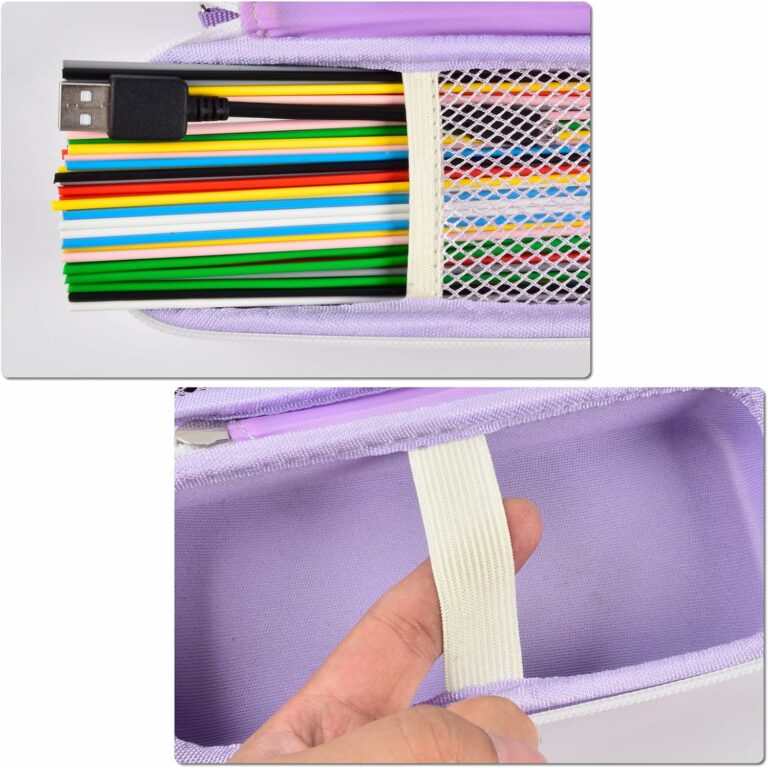Imagine a world where you can fold your smartphone like a book, flip it open like a wallet, or even flex it to fit in your pocket with ease. Well, that futuristic world is no longer a distant dream, as the rise of flexible smartphone screens is revolutionizing the way we interact with our devices. The ingenious technology behind Fold, Flip, and Flex allows for greater portability, durability, and versatility, making it an exciting advancement in the realm of mobile technology. Get ready to experience a whole new level of flexibility and convenience as the future of smartphones unfolds before your eyes!

History of Flexible Screens
Early Development of Flexible Display Technology
Flexible display technology has a rich history that can be traced back to the early 1970s, when researchers first began exploring the possibilities of creating displays that could bend and flex. The initial goal was to develop a technology that would enable the creation of portable electronic devices with screens that were not limited by the constraints of rigid panels.
The First Foldable Smartphone
In recent years, the dream of a foldable smartphone has become a reality. In 2019, Samsung introduced the world to the Galaxy Fold, the first commercially available foldable smartphone. This groundbreaking device showcased the potential of flexible screens, allowing users to unfold their smartphone into a tablet-like form factor. The Galaxy Fold garnered significant attention and set the stage for further advancements in flexible screen technology.
Advancements in Flexible Screen Technology
Since the launch of the Galaxy Fold, there have been notable advancements in flexible screen technology. Manufacturers have been able to refine the design and functionality of foldable smartphones, making them more durable and user-friendly. These advancements have opened up new possibilities for smartphone design, revolutionizing the way we interact with our devices.
Benefits of Flexible Screens
Increased Durability
One of the key benefits of flexible screens is their increased durability compared to traditional rigid screens. Flexible displays are made from materials that can withstand bending and twisting without breaking, making them less likely to shatter or crack when dropped. This enhanced durability provides peace of mind for users, as they no longer have to worry about their smartphone screen breaking easily.
Enhanced Portability
Flexible screens also offer enhanced portability, as they can be folded or rolled up, making the devices more compact and easy to carry. This is particularly beneficial for users who are always on the go and need their smartphones to seamlessly fit into their pockets or bags. The ability to fold or roll up a smartphone also opens up new possibilities for wearable technology, as it allows for devices that can be worn on the wrist or attached to clothing.
Expanded Display Options
With flexible screens, users have the ability to enjoy expanded display options. Foldable smartphones, for instance, can be unfolded to provide a larger screen area, giving users a tablet-like experience. This is especially useful for activities such as watching videos, playing games, or multitasking. The ability to expand and contract the screen size based on user preferences adds a new level of versatility to the smartphone experience.
Challenges and Limitations
Design and Manufacturing Constraints
One of the main challenges in developing flexible screens lies in the design and manufacturing process. Designing a foldable or rollable screen that is both functional and durable requires careful consideration of materials, mechanics, and engineering. Additionally, the manufacturing process for flexible screens can be complex and costly, leading to higher production expenses.
Technical Obstacles
Flexible screens also face technical obstacles that need to be addressed. One such obstacle is the development of a foldable or rollable screen that is resistant to frequent folding and unfolding without degradation in performance or image quality. The durability of the flexible material and the reliability of the hinges are crucial factors in ensuring a long-lasting and high-quality user experience.
Cost Considerations
Cost is another significant limitation when it comes to flexible screens. The complexity of the manufacturing process, coupled with the need for specialized materials, contributes to higher production costs. This, in turn, affects the pricing of devices with flexible screens, making them more expensive compared to traditional smartphones. As the technology continues to advance and become more widely adopted, it is expected that costs will gradually decrease, making flexible screens more accessible to a broader range of consumers.
Foldable vs. Rollable Screens
Foldable Screens
Foldable screens, as the name suggests, can be folded like a book, allowing users to transform their smartphones into tablets or other larger display devices. This form factor offers the advantage of providing a larger screen area when needed while still maintaining the compactness of a smartphone when folded. Foldable screens are suitable for users who require a larger display for certain activities but still want the portability and convenience of a smartphone.
Rollable Screens
Unlike foldable screens, rollable screens can be rolled up like a scroll, offering a unique form factor that can be extended or retracted as needed. This design allows for even greater portability and versatility, as the device can be compacted down to a smaller size and then expanded to a larger screen area when desired. Rollable screens are particularly appealing for users who value compactness and want the ability to adjust their device’s screen size based on their current needs.
Comparison of Foldable and Rollable Technology
Both foldable and rollable screens have their own advantages and are suited to different user preferences. Foldable screens provide a tablet-like experience and are ideal for activities that require a larger screen, such as content consumption and multitasking. On the other hand, rollable screens offer the convenience of adjustability, allowing users to easily switch between a compact form factor and a larger screen. The choice between the two technologies ultimately depends on individual needs and priorities.

Current and Upcoming Flexible Smartphones
Leading Brands Adopting Flexible Screens
Several leading smartphone manufacturers have embraced flexible screen technology and have incorporated it into their products. Companies like Samsung, Huawei, and Motorola have introduced foldable smartphones, while others like LG and TCL have focused on rollable screen devices. This shows a growing trend in the industry towards the adoption of flexible screens as a way to differentiate and innovate in the highly competitive smartphone market.
Overview of Noteworthy Foldable Smartphone Models
The market for foldable smartphones has seen significant growth since the introduction of the Galaxy Fold. Noteworthy models include the Samsung Galaxy Z Fold2, Huawei Mate Xs, and Motorola Razr. These devices offer unique features and design elements that cater to different user preferences. For example, the Galaxy Z Fold2 boasts a large inner display for immersive experiences, while the Motorola Razr brings back the nostalgic flip-phone design with a modern twist.
Anticipated Rollable Screen Devices
While foldable smartphones have dominated the flexible screen market, there is growing anticipation for rollable screen devices. LG, in particular, has been at the forefront of rollable screen technology with their LG Rollable concept, which showcases a device that can transform from a smartphone to a tablet-like form factor with a simple expansion. The LG Rollable is expected to be a game-changer in terms of form factor innovation and could pave the way for new possibilities in flexible screen technology.
Flexible Screens in Other Devices
Flexible Screens in Tablets and Laptops
The benefits of flexible screen technology extend beyond smartphones and are also being explored in other devices such as tablets and laptops. The ability to fold or roll the screen offers increased portability and flexibility, giving users a more versatile computing experience. Imagine a tablet that can be folded into a compact size for easy transportation or a laptop with a rollable display that can be adjusted to different screen sizes based on productivity needs.
Applications in Wearable Technology
Flexible screens are also finding applications in the world of wearable technology. From smartwatches to fitness trackers, the ability to have a screen that can be curved, bent, or rolled opens up new possibilities for design and functionality. Flexible screens in wearables allow for curved displays that wrap around the wrist, providing a more comfortable fit and enhanced usability. This advancement in display technology is transforming the way we interact with wearable devices and making them more seamlessly integrated into our daily lives.
Potential Use in Automotive Displays
The automotive industry is also starting to explore the potential use of flexible screens in displays and infotainment systems. Flexible screens can be integrated into curved surfaces such as dashboards or center consoles, providing a sleek and futuristic look. The flexibility of the screens allows for customization of shapes and sizes to fit different vehicle models. This application not only enhances the visual appeal of the vehicle’s interior but also improves the overall user experience by offering intuitive and dynamic interfaces.

Technological Innovations Driving the Flexibility
Advancements in OLED Technology
One of the key technological advancements driving the flexibility of screens is the development of Organic Light Emitting Diode (OLED) technology. OLED screens are made up of thin layers of organic compounds that emit light when an electric current is applied. This technology allows for flexible displays with high color accuracy, contrast ratios, and energy efficiency. OLED displays also have the advantage of being thin and lightweight, making them ideal for portable devices.
New Materials for Flexible Screens
In addition to OLED technology, the use of new materials has played a crucial role in enabling flexible screens. Materials such as polyimide and indium tin oxide (ITO) have been utilized to create flexible substrates and transparent conductive coatings, respectively. These materials can withstand repeated bending and stretching without compromising the performance and quality of the display. The continuous development of materials with improved flexibility and durability is essential in driving the advancement of flexible screen technology.
Developments in Foldable Touchscreen Interfaces
Another area of technological innovation in flexible screens is the development of foldable touchscreen interfaces. Traditional touchscreens rely on rigid glass or plastic panels, which are not compatible with foldable screens. To overcome this limitation, manufacturers have developed flexible touchscreen technologies that can work seamlessly with bendable displays. This allows users to interact with their devices through touch gestures and maintains the responsiveness and functionality of the touchscreen even when the display is bent or folded.
Impacts and Implications
Transforming User Experience
The rise of flexible screens has the potential to transform the user experience in several ways. The ability to fold, flip, or flex a smartphone or other device opens up new possibilities for how we interact with technology. Users can enjoy a more immersive and versatile experience, whether it’s watching videos on a larger screen or carrying a compact device that can be easily extended when needed. The flexibility of the display enhances the usability and adaptability of devices, providing users with a more personalized and intuitive experience.
Influencing Device Design
Flexible screens have a significant impact on device design. The ability to bend and flex the display allows for more freedom and creativity in designing sleek and ergonomic devices. Manufacturers can explore unique form factors that were previously not possible with rigid screens, leading to devices that are more aesthetically pleasing and user-friendly. The integration of flexible screens in device design also opens up new possibilities for seamless integration with other components, such as batteries and sensors.
Revolutionizing the Smartphone Industry
Flexible screens are revolutionizing the smartphone industry by offering new ways to differentiate and innovate. With the introduction of foldable and rollable smartphones, manufacturers are pushing the boundaries of what a smartphone can be. This new form factor creates excitement among consumers and drives competition among manufacturers to develop the most innovative and functional devices. The rise of flexible screens is transforming the smartphone market, paving the way for a new era of mobile technology.
The Future of Flexible Screens
Predictions for Market Growth
The future of flexible screens looks promising, with continued growth and adoption expected in the coming years. As the technology matures and becomes more affordable, it is predicted that flexible screens will become increasingly popular among consumers. Market research suggests that the global market for foldable smartphones alone is projected to grow significantly over the next few years, with an increasing number of manufacturers entering the market and offering a wider range of flexible screen devices.
Exploration of Next-Generation Flexible Screen Concepts
As the current generation of foldable and rollable screens continues to evolve, researchers and manufacturers are already exploring the possibilities for next-generation concepts. Concepts such as stretchable screens, which can be stretched like a rubber band, and transparent screens, which can be seamlessly integrated into everyday objects, are being explored. These concepts could redefine our understanding of flexible screens and open up new opportunities for innovation in various industries.
Integration of Other Technologies
Flexible screens are not only driving innovation within the display industry but also paving the way for the integration of other technologies. For example, flexible screens can be combined with advancements in biometric sensors to create devices with embedded fingerprint scanners or facial recognition technology. The integration of flexible screens with technologies like 5G connectivity, augmented reality, and artificial intelligence holds the potential to create truly revolutionary devices that can enhance our daily lives in ways we have yet to imagine.
Environmental Considerations
Sustainability Challenges and Solutions
With the rise of flexible screens, sustainability challenges need to be addressed. The manufacturing process of flexible screens involves the use of specialized materials and complex manufacturing techniques, which can have a significant environmental impact. To mitigate these challenges, manufacturers are actively exploring sustainable alternatives, such as using recyclable materials and implementing energy-efficient manufacturing processes. Additionally, efforts are being made to reduce waste generation and improve recycling capabilities for flexible screens.
Recycling and Disposal of Flexible Displays
The recycling and proper disposal of flexible displays pose unique challenges due to the complexity of the materials used and the need for specialized recycling processes. Efforts are being made to develop recycling techniques that can recover valuable materials from end-of-life flexible displays and minimize environmental impact. It is crucial for manufacturers, governments, and consumers to work together to establish effective recycling programs and ensure responsible disposal of flexible displays to minimize electronic waste and its associated environmental consequences.
Carbon Footprint Reduction
The production and use of flexible screens contribute to the carbon footprint associated with electronic devices. As the demand for flexible screens increases, manufacturers have a responsibility to reduce the carbon emissions resulting from the manufacturing processes. This can be achieved through the adoption of renewable energy sources, improvement in manufacturing efficiency, and the implementation of sustainable practices throughout the supply chain. Additionally, consumers can contribute to carbon footprint reduction by using their devices responsibly, recycling them at the end of their lifecycle, and making conscious choices when purchasing new devices.
Foldable, flip, and flex: the rise of flexible smartphone screens has revolutionized the way we interact with technology. The early development of flexible display technology set the stage for the introduction of the first foldable smartphone, the Samsung Galaxy Fold. Advancements in flexible screen technology have led to increased durability, enhanced portability, and expanded display options. However, there are challenges and limitations to overcome, including design and manufacturing constraints, technical obstacles, and cost considerations.
The choice between foldable and rollable screens depends on individual needs and preferences. Foldable screens provide a tablet-like experience, while rollable screens offer adjustability and versatility. Leading smartphone brands have embraced flexible screens, and the market is growing with noteworthy models like the Samsung Galaxy Z Fold2 and the Motorola Razr. Anticipation is high for upcoming rollable screen devices, such as the LG Rollable, which showcases a new form factor.
Flexible screens are not limited to smartphones and are also being explored in tablets, laptops, wearable technology, and automotive displays. The technological innovations driving flexibility include advancements in OLED technology, the use of new materials for flexible screens, and developments in foldable touchscreen interfaces.
The impacts and implications of flexible screens are far-reaching. They transform the user experience, influence device design, and revolutionize the smartphone industry. The future of flexible screens is promising, with predictions for market growth and exploration of next-generation concepts. Integration with other technologies, such as biometric sensors and connectivity advancements, holds immense potential.
Considerations for sustainability and the environment are also crucial. Manufacturers are addressing sustainability challenges by exploring recyclable materials and implementing energy-efficient manufacturing processes. Proper recycling and disposal of flexible displays are essential to minimize environmental impact and reduce electronic waste. Furthermore, efforts to reduce the carbon footprint associated with flexible screens are necessary, involving the adoption of renewable energy sources and sustainable practices.
Foldable, flip, and flex: the rise of flexible smartphone screens has truly transformed the world of technology. With ongoing advancements and innovations, the future of flexible screens holds endless possibilities for enhancing user experiences, driving design innovation, and shaping the way we interact with devices.


